
A Beginner’s Guide
to Digital Advertising
We’re cutting to the chase: digital advertising is challenging. Not only are platforms constantly changing, but planning, creation and maintenance of campaigns takes a lot of time and resources – things most people are running low on. Read on for a detailed how-to on getting started with your own campaign. If you get stuck, Neuger is here to help!
Let’s get started!
- Identifying the Purpose of Your Campaign
- Selecting Your Campaign Channels
- Developing Campaign Creative & Content
- Setting Your Campaign Budget
- Testing, Monitoring & Adjusting Your Campaign
Step 1: Identify the Purpose of Your Campaign
Before you dive in, think about what you want to achieve in your campaign. Here are the most common reasons to develop an ad campaign.
Increase Awareness
Whether it’s increasing recognition of your brand, enhancing your reputation in the marketplace or improving your overall brand presence, we wouldn’t be surprised to hear that informing potential clients or customers about you, your services or your products is at the top of your goals list.
Generate New Leads
If users learn about you and are interested in your product or service, the time has come to collect more information on those individuals and add them to a list of leads.
Convert Leads to Sales
You’ve built a strong network of leads. Now, it’s time to drive those leads to make a decision and take action.

Step 2: Consider Your Audience
Understanding your audience is key to predicting behaviors and serving them the messages that are right for them. Simple things like age and education level play a big part in peoples’ decisions about what types of channels they consume.
If you haven’t already, now’s a good time research your audience, focusing on factors such as:
- Age
- Location
- Profession
- Education level
- Hobbies
- Online behavior
Knowing these details will help inform your channel decisions because people with different demographics use different platforms.
Where is your audience at?
Digital advertising is most effective when it is one part of an integrated marketing strategy. Different touch points help a lead go from awareness to brand loyalty.
The customer journey focuses on the path that a lead or prospect might take in their decision-making process. Remember: folks interact with your brand at different stages of the journey (and their path is not always linear), which is why implementing cross-channel, integrated communication methods is so important to reaching them. Your message should be built in the places that matter most to you and those you’re trying to reach.

Step 3: Select Channels
Picking out a channel means choosing which digital ad platform is right for you. This will be based on the goal you chose in Step 1 as well as considerations about your audience.
Align Your Channel With Your Goal
Remember those goals from Step 1? Now is the time to put those to use.
Goal:
Increase Awareness
The following ad types are a great fit for introducing people to your service or product even though they may not be seeking it out.
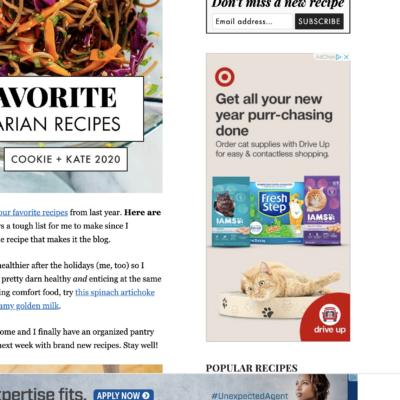
Display Ads
Display ads are image-based ads that include some text and design elements. When clicked, a display ad drives users where you want them to go – say, a landing page or a form on your website. Display ads use settings called targeting to promote your organization to the right types of audiences. Different types of display ads include:
- Google display advertising, a product of Google Ads, which serves ads to websites in the Google Display Network, a network that reaches 90% of internet users worldwide
- Facebook and Instagram display advertising
- LinkedIn display advertising
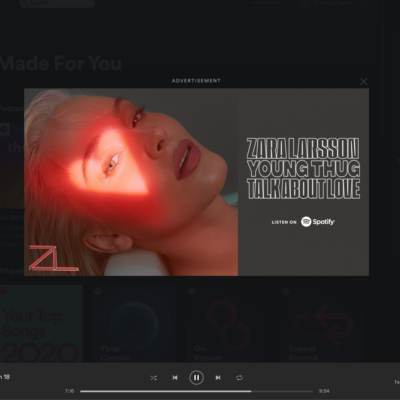
Online Radio Streaming Ads
Ads on online radio streaming platforms, such as Spotify or Pandora, can be very effective. In addition to standard demographic targeting, these platforms allow for additional specifics, such as genre interests, playlist choices and more. Ad creative has several options:
- Recorded audio spot with accompanying still image
- Video
- Image only
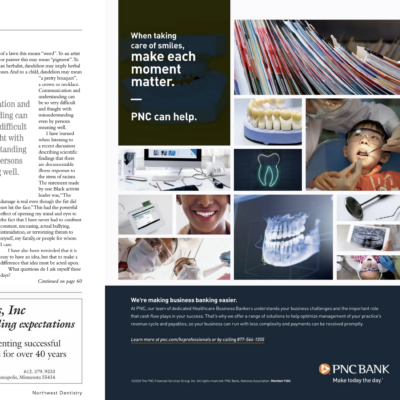
Sponsorship of Third-Party Content
Placing an ad, being featured as a partner, or writing content for groups such as professional associations or in industry e-newsletters is a great way to connect with your audiences through content they are already consuming. For instance, if you’re trying to reach architects, placing an ad in a trade publication or with a professional association relevant to their profession further defines your outreach. You don’t have to guess if you’re reaching the right people.
Your ad will go even further if the messaging directly correlates to the content the ad is placed near.
Goal:
Generate New Leads
Some ad types are more likely to result in conversions because of better targeting or user intent.
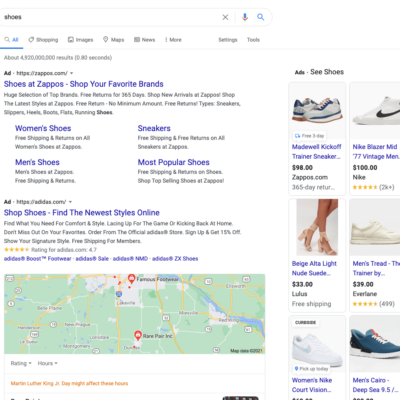
Search Engine Marketing (SEM)
SEM, such as with Google Ads, promotes your website in search results listings. The main benefit for this type of ad is that users are actively interested in and seeking out the service you offer, as your ads are served to those who are searching relevant and related terms to your work. Because of this intent, users are much more likely to convert if clicking on this type of ad. SEM ad types can include:
- Text ads
- Shopping or product listing ads
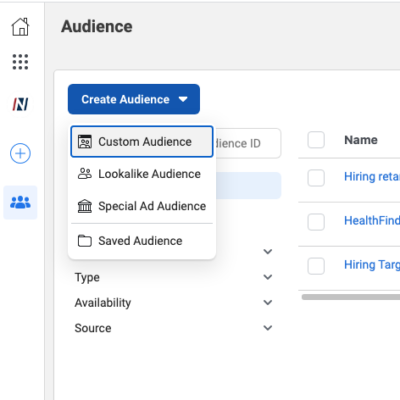
Digital Display Advertising Using Data and Lookalike Audiences
Did you know you can take display advertising targeting one step further with data? By using customer/prospect data you already have on hand, you can target those people directly with a customer list. For best results, start with a list of at least a thousand names, as the match rate for a customer list averages around 40%.
You could also expand your reach to a broader audience based on data using a lookalike list. Lookalike lists are options within the Facebook Ads and Google Ads platforms that allow you to expand your reach to users who are very similar to the individuals on your customer list.
Goal:
Convert Leads to Sales
These types of ads are great for if your customer has heard of you and is ready to make a purchase decision.
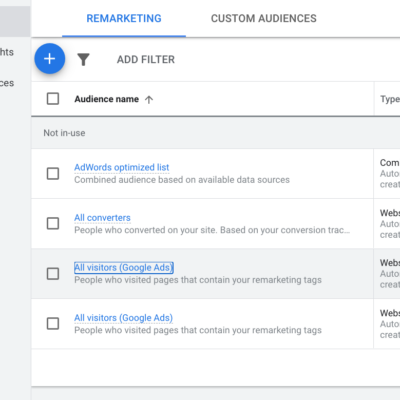
Remarketing/Retargeting Ads
Remarketing or retargeting ads, such as through Google or Facebook/Instagram, offer a way to connect with users who have previously interacted with an ad or visited your website. Though the ads themselves may look very similar to a traditional display ad, they are special because they are served after someone has shown interest in your service or product.
Not only does this multiple-touch approach further increase awareness, it also reminds them about your organization, encouraging them to choose you, your products or your services as the next step in their decision-making process.
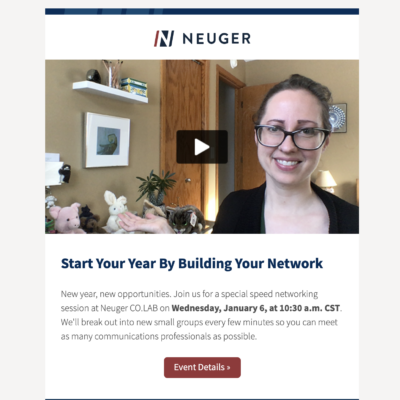
Email marketing and/or Drip Campaigns
Email marketing is a great way to engage with audiences who are already familiar with your work, helping to remind them of your brand and to share your organization’s ongoing story.
Email drip campaigns take general email marketing a step further. Drip campaigns include a series of automated emails that are sent based on a predefined timeline or when a user takes a specific action, such as entering a giveaway or downloading a resource that requires them to enter their email address. One great thing about drip email marketing is that – aside from it being an automatic process set in your CRM or email software – you write the content once and can assign multiple people to the same sequence. Gone are the days of having to manually write and send the “welcome” or “thanks for subscribing” email series!

Step 4: Develop Creative & Content
Congrats – you’ve reached the “fun” part! Once you’ve identified your campaign purpose and objectives; understand your audience; and have chosen your channels, it’s time to get started on the actual ads by developing compelling creative (the “look and feel” of your ad assets) and content.
How to Build Strong Ad Content
Whether it’s a display ad, a text ad, an audio ad or something else, there are a few important things to keep in mind in order to build a strong ad.
- Text ads, such as SEM ads, should include keywords that you are bidding on.
- Visual ads must reflect your audience (e.g., Do the people in the photo look like who you are trying to reach?).
- Ads must have a clear call to action – such as “learn more,” “get enrolled,” “donate now.” Even display ads, used primarily for awareness building, can include a call to action. You can do this by incorporating a visual element on the image that looks like a “button” or otherwise shows action (e.g., an arrow).
- For audio ads, script content, voiceovers and background music should speak to and align with the target audience. For instance, if you’re trying to reach affluent adults, a childlike voice may not be a good choice.
How to Build Strong Landing Pages
A landing page serves as a “landing spot” for users who click through your ad. Consistency, cohesion and professionality are key to ensuring a good user experience. The landing page should reflect your campaign purpose: awareness, leads or conversion. The purpose is shown through the content, images and call to action portrayed on the landing page.
- Awareness: Are you providing ample opportunities for the audience to learn more about the benefits of your product or service? You should not necessarily expect them to convert on this page.
- Leads: Provide a case for why the lead should give you information. What’s in it for them? A whitepaper download? A free trial? Only ask for minimal information that is absolutely necessary.
- Conversions: Remind users of your value and try to limit their focus by removing navigation and outside links, making it easier for them to convert.
Ideally, the landing page should be customized with content for your campaign. For instance, avoid sending users to your homepage, where desired actions can be buried and less obvious.
How to Set Up Conversion Tracking
Conversion tracking is a way to track what happens after a user interacts with your ad, such as signing up for something, downloading a resource, filling out a form, etc. Keep in mind that:
- Conversion tracking mechanisms are different for every platform. It is beneficial to set up your tracking in-platform because it can report data beyond a single session.
- You will need to use a tool like Google Tag Manager to manage multiple conversion codes. Generally, each tracking platform will need you to install special code on your website for each conversion you want to track.
- Although your ultimate conversion is the most important, consider monitoring multiple smaller conversions outside of your ultimate conversion (e.g., popup clicked, time spent on page) to get a sense of the success of your campaign beyond the main goal. Insights gained from smaller conversions can shed light on things that are going right once users get to your landing page and things that may need improvement.

Step 5: Set Your Budget
When setting your digital advertising budget, it’s important to first determine two things that will influence and guide your budget: your goals and measurement benchmarks.
Goals
Set a SMART (Specific, Measurable, Achievable, Relevant, Timed) goal. SMART goals are specific enough to be measurable and are relevant enough to your organization to not be too big or too small to achieve. Be sure your goal includes a measurable number. For instance, “Gain 50 leads by August 31.” is a much more attainable goal and more helpful to influencing your budget than “Gain leads this year.”
Measurement Benchmarks
It’s difficult to choose a budget when you don’t have a standard or point of reference for what you should achieve. Start by identifying click-through rates and conversion rates for your industry, using a resource like Wordstream, so you know where to start. Better yet, do you have past performance data from which to benchmark your campaign? Analyze what your past conversion rates have been with advertisements which will help you determine what your larger reach and budget should be.

For example, say you want to register 100 potential clients for an event, but your conversion rate has historically been 1%. You’d want to gain 10,000 clicks over the months of campaign performance to ensure you fill your event. Plan your campaign with your conversion rate in mind so that you hit your clicks target.
Conversions = 100 (end goal)
Benchmark Conversion Rate = 1%
Algebra time! If 1% of x = 100, then x = 10,000.
Clicks Needed = 10,000
Benchmark Click-Through Rate = 3%
We’ll need to do some more math. If 3% of x = 10,000 clicks, then x = 333,333.
Impressions = 333,333
So, in this example, we would need 333,333 impressions in order to expect to hit our conversion goal of 100. You should plan for enough budget to hit your impression and clicks goals. Most advertising platforms tell you your expected reach based on your targeting and budget as you build your campaign, so it is helpful to be ready with this information as you configure your budget within the ad platform.

Step 6: Test, Monitor and Adjust
Congratulations! You have made it to the point of creating your ads within your selected platforms, setting your budget and starting your campaign. It might feel like you can brush off your hands, pat yourself on the back and walk away, but there is much more to be done as the ad platforms learn about you and your performance. If resources allow, performing tests, continuous monitoring and frequent adjustments will help your digital ad campaign be as effective as possible, even after it’s been running for some time.
Testing
A/B testing compares two versions of a web page, app or ad against each other to determine which one performs better. A/B testing depends on industry and bandwidth, but if you have the option, always do it because it can quickly identify what you’re doing wrong if you are not receiving desired results. Here are a few tips from HubSpot to consider when conducting A/B testing.
Monitoring
Key metrics to monitor include:
- Click-through rate: This measurement is the number of clicks that your ad receives divided by the number of times your ad is shown (impressions). In a digital ad campaign, your click-through rate shows how relevant your ad is to the chosen targeting.
- Website analytics: Use your website analytics to answer questions like whether users who are clicking are staying and engaging with your landing page content. If they’re not staying, to which page are they going next? Or are they exiting your site entirely?
- Conversion tracking: Is your conversion rate matching your goal after at least eight weeks of performance? If so, give yourself a high five. If not, consider if the graphics and messaging are closely tied to the landing page experience or explore other adjustment options.
Adjustments
When determining when and how to make campaign setting adjustments, consider these tips:
- Wait at least three weeks before making major changes because it takes a little while for ad platform algorithms to learn.
- For SEM, consider starting adjustments at the keyword match settings level – try changing the match settings to be broader or narrower and see how that impacts your metrics.
- For any adjustments you make, remember that you need to monitor and strike a balance between getting too many poor impressions or not enough quality impressions.

You Made It!
You are on your way to launching and managing a solid digital ads campaign. You’re the type of doer who rolls up your sleeves, applies yourself and gets the job done.
Digital Ads Support
But you don’t have to do it alone. For additional resources and support, contact Neuger at 888.761.3400. Our digital experts are here to help you!